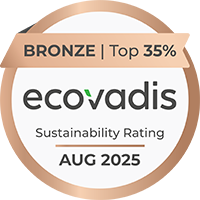Executive coaching represents a real investment in both time and money for organisations and their managers. Serious issues are the order of the day and a poorly set up coaching relationship can potentially be an expensive and disappointing experience. Therefore it is imperative that the matching process between coach and potential client is properly managed and the ‘chemistry’ conversation is a vital component of this process.
At Management Futures we are pleased to be experiencing a buoyant demand for our executive coaches. We are also pleased to note that whereas in the past there might be a degree of nervousness about the coach selection process we are now typically being trusted and relied upon to make recommendations as to the ‘fit’ of a coach to particular clients. Hitherto it was the norm for customer organisations to request three or even more chemistry conversations for the typical coaching client: currently it is far more usual for them to ask for a recommendation and we have yet to hear of one of these proving unsuccessful.
However it remains vital that proper chemistry between coach and client is given a chance to develop before coaching ‘proper’ begins. The ‘chemistry’ conversation is one in which, typically, client and coach converse by phone with a view to deciding if they are going to work together. It is so called because the idea is that both parties should feel the relationship can offer the right interpersonal dynamics and ‘feel’ to create mutual confidence. In theory this is a process of mutual choosing. In reality most competent executive coaches can coach across a wide range of personality and character types, building rapport and flexing their style as required; so most of the choosing is in fact done by the client.
In an ideal world, the chemistry conversation should achieve the following:
For the client:
- A sense of being listened to, connected with, respected and understood
- A chance to test out how the coach might deal with particular scenarios
- A chance to get a feel for the coach’s style and method
- A chance to ask questions about the coach’s specific experience
For the coach:
- A chance to understand the broad areas the client may want to work on
- A chance to check out how the client wants the coaching to go
- A chance to describe how they will work – their style
- A chance to listen out for any danger signals – signs that the client might be coming into coaching for the wrong reasons, e.g. they feel under pressure to be coached from their organisation
For the organisation:
- The chance to introduce the client to a highly suitable coach
- Assurance that the client is comfortable and confident with their choice of coach
For the client it is most important there is a ‘gut’ feeling of trust and confidence – this is the ‘chemistry’ part of the conversation. Additionally they should feel that the coach has clearly demonstrated their approach and how they will work with their issues. They should prepare a list of questions in advance and ask the same questions of each coach, making notes.
For the coach it is vital to ensure the client understands how they intend to work and that they are clear the client owns their agenda and is committed to doing the work.
For the organisation it is vital that the potential coaching company willingly offers the conversations without charge or obligation and with the assurance that other coaches can be contacted if the client wishes to speak to more than one.
On a practical note the conversations should:
- Be agreed as confidential between coach and client
- Be no more than 30 minutes in length – they should not become coaching conversations in themselves
- Be closely spaced if more than one coach is to be considered, so as to allow the client to make immediate comparisons and make a choice from fresh memory.
- Come with a commitment to make a quick decision from all parties – weeks of delay can reduce commitment, impact and relevance
Finally, all parties should feel free to say the arrangement is not working once coaching ‘proper’ has begun. If coach or client do not feel positive in the first session they should politely say so and agree to disengage.







